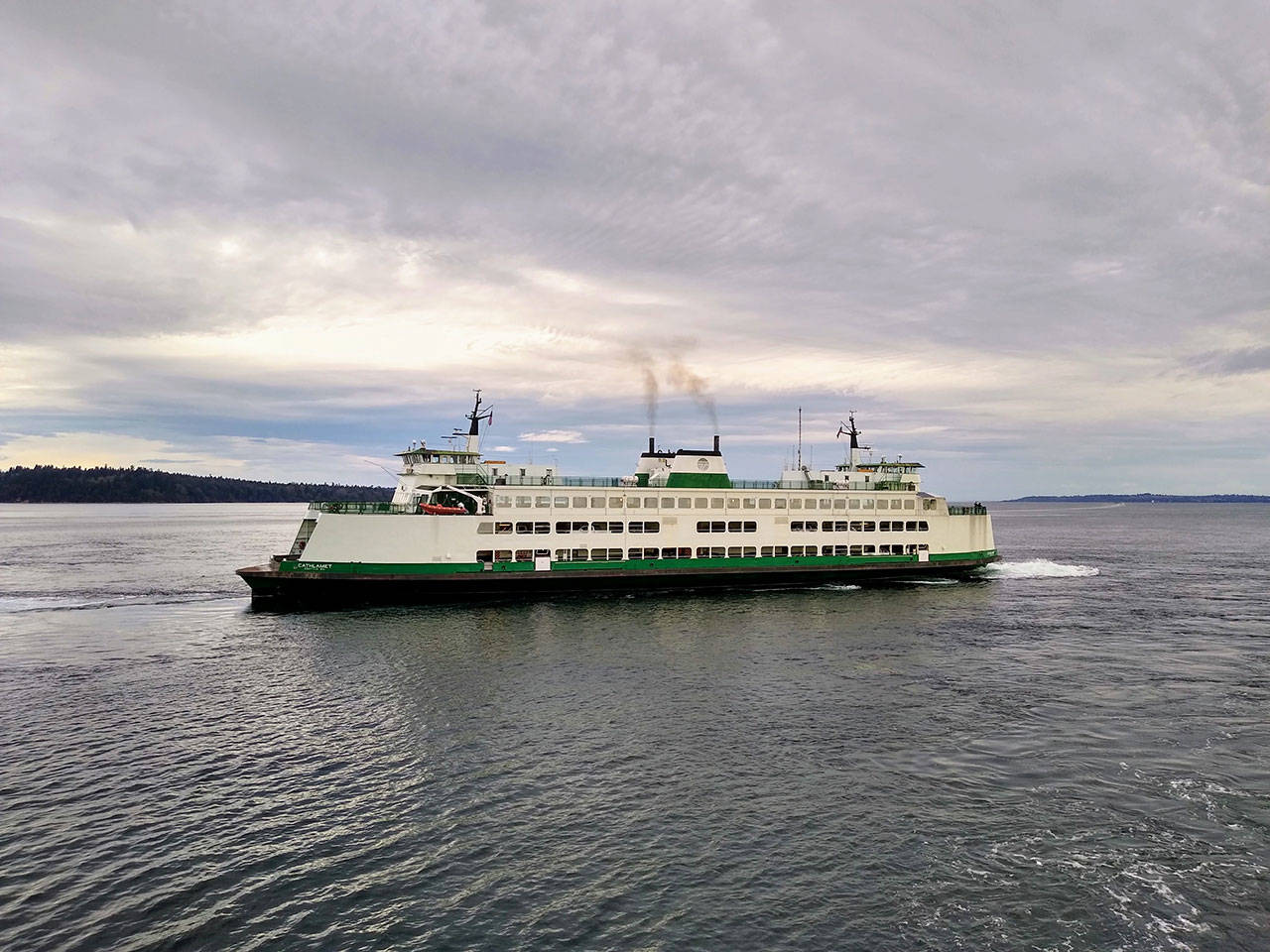Washington State Ferries (WSF) will run what officials call a modified peak schedule starting on May 9 and running through Sept. 25, adding a third vessel back to the triangle route for weekday and weekend sailings as the area steadily rebuilds and some passengers return.
Service will not change for crossings between Tahlequah and Point Defiance. The additional vessel on the triangle route will operate for 16 hours a day on weekdays and eight hours a day on weekends.
The schedule update comes months after several routes were put on a two-boat winter sailing schedule in reaction to the pandemic, including the Fauntleroy/Southworth/Vashon route.
At a virtual community meeting last week, Patty Rubstello, WSF assistant secretary, focused on positives such as the new Mukilteo terminal and ongoing efforts to electrify the fleet with the support of the Governor and legislature. But she said that ridership on Washington State Ferries last year fell to the lowest level since 1975, a decrease of almost 10 million customers in 2020, or about 41%.
The circumstances required adaptation and innovation, Rubstello said, praising the agency’s staff and crew members.
“This isn’t something you have in the playbook and you prepare for,” she said.
When the outbreak of the pandemic started almost a year ago and Gov. Inslee first released his Stay Safe, Stay Home order, WSF had an unprecedented crisis of keeping customers and employees safe and protected, while also adjusting to a drastic decrease in ridership, said Stephanie Cirkovich, Community Service and Planning Director.
She noted that while initially cutting service across the ferry fleet was the right thing to do, it was less obvious how boats could be fully restored to service as the agency started to recover.
“There have been and continue to be a lot of unknowns. While ridership has certainly rebounded some, we’re not sure when it will fully return or even if it will look like what it did before, with more people telecommuting and demographic shifts,” she said, adding that the virus remains out of control, with emerging variants that could further impact travel.
Compared to last spring, traffic has risen dramatically system-wide, with the exception of walk-on travelers, precipitating this summer’s increased service that will see more routes coming back online. The move would also assist in instances where demand was higher than anticipated through lockdown, leading to regular delays, such as the Anacortes/San Juan Islands route, Cirkovich said, responding to a comment from a resident at the meeting who said they had experienced poor performance.
Not all sailings will be coming back soon. The agency plans to keep all service from Anacortes to Sidney, British Columbia suspended this summer, as the Canadian border remains closed and with months of planning required, it is not reasonable to expect WSF to be operational internationally by May, she said.
In addition to constraints such as decreased demand and the need for funding, Cirkovich said that the pandemic made it extremely difficult to attract and train new crew members, a problem heightened by the fact that, as officials have stressed in the past, much of the ferry system’s workforce is close to retirement age.
Moreover, the construction stoppage that occurred with the stay-at-home order last year has hit the maritime industry hard, and it now takes longer to schedule maintenance and repairs, especially for large vessels, Cirkovich said.
Taken together, though WSF has been significantly strained by the uncertainties and stresses, staff have been working hard to anticipate when the organization will be able to return to a service level that looks a little more normal in time, she said.
“What we can say for sure is that we are trying to provide as much reliability and predictability as we can in a very unreliable and unpredictable time, with health and safety being our number one priority,” Cirkovich said.
Passengers boarding ferries in their vehicles are advised to stay in their cars for the duration of their trip, while cabin passengers should practice healthy physical distancing inside. To prevent the spread of COVID-19, face masks are required at all WSF facilities, both in indoor and outdoor areas.
Food bank director joins island ferry advisory committee
Last week, a new member was named by the King County Council to the Vashon Ferry Advisory Committee (FAC).
Vashon Food Bank’s Executive Director Emily Scott is the newest member of Vashon’s FAC, joined by Eric Beckman and Justin Hirsch, who will assist WSF to develop schedules, solve challenges and help the agency understand regional problems better. Scott replaced longtime FAC member Greg Beardsley.
Scott, who has lived on the island since 2012, earned her master’s degree in public administration from the Evans School of Public Policy and Governance at the University of Washington in 2019, where she served as a research assistant on a research project sponsored by the Washington State Legislature examining how to improve ticketing and boarding at the Fauntleroy Ferry Terminal.
Her experience at the Evans School, she said, and her role at the food bank, offer her the chance to elevate the voices and needs of some of Vashon’s lower-income community, something Scott said has been a challenge for WSF.
“Not just ferries [but] with lots of public entities, you don’t get the same feedback from those lower-income communities, because folks don’t have the time or the access to show up to, you know, a 6 p.m. Zoom meeting about ferries outreach,” she said. “I’m excited to be able to put both my ferries knowledge and my Evan’s School skills to work and just help people feel like they’re being better served by a public entity.”
After press time, the members of the Vashon FAC provided an update on their work for the Vashon Maury Island Community Council, meeting on Tuesday at 7 p.m. on Webex.



